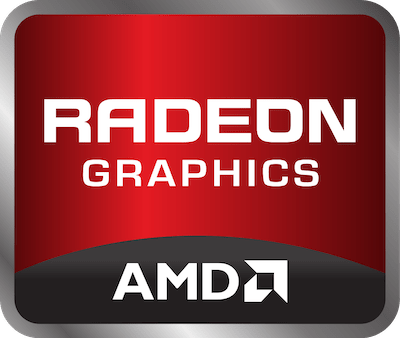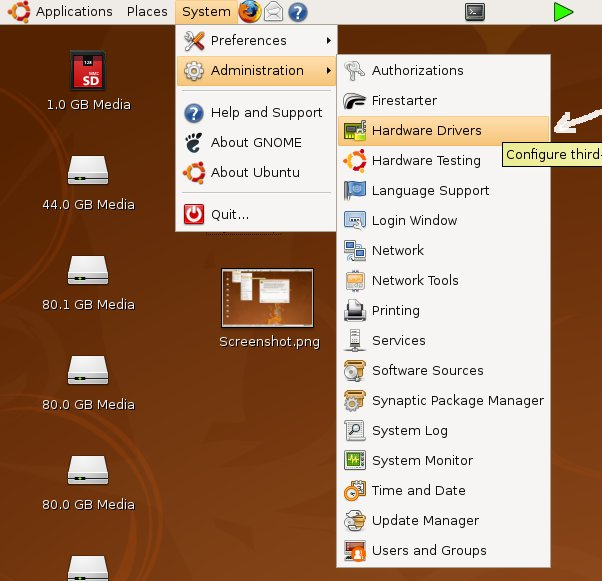

- #ATI DRIVERS FOR UBUNTU HOW TO#
- #ATI DRIVERS FOR UBUNTU INSTALL#
- #ATI DRIVERS FOR UBUNTU MANUAL#
- #ATI DRIVERS FOR UBUNTU FULL#
- #ATI DRIVERS FOR UBUNTU SOFTWARE#
This absolutely must be done before rebooting or you will run into some massive headaches trying to fix this problem without being able to see anything on the screen. Before rebooting, generate a new nf file.

Now this next step is very important so follow the details closely.
#ATI DRIVERS FOR UBUNTU INSTALL#
$ sudo apt-get install fglrx fglrx-amdcccle $ sudo apt-get install linux-headers-genericĪfter rebooting, install the drivers from the Ubuntu repos using the following commands. Use the following two commands to complete these tasks and then reboot before proceeding to the next step. Next, you need to purge the current fglrx files and install the Linux generic headers (if you haven't already). This file is where all of the configuration information for your input devices and output devices resides, such as video cards, monitors, keyboards and mice: The first thing we want to do is make a backup copy of the nf configuration file (if you have it) in case this ends up failing and we need to restore the previous version.
#ATI DRIVERS FOR UBUNTU HOW TO#
Now that we've covered how to install a driver using downloaded drivers from AMD's website, let's cover how to install the drivers using Ubuntu repositories (repos) and the command line interface. If you need to make configuration changes via AMD Catalyst Control Center you can find it in the Application OpenGL version string: 3 Compatibility Profile OpenGL renderer string: AMD Radeon HD 6700 Series OpenGL vendor string: Advanced Micro Devices, Inc. You should get terminal output that looks something similar to the following: To confirm that the drivers are working open a terminal and type $ flgrxinfo. If all went well, the fglrx (Catalyst) driver will be installed and working on your system. After this command is finished, reboot the system. After that, run $ sudo amdconfig –initial to configure the installation. deb files, use $ sudo dpkg –i flgrx*.deb.

In Ubuntu 12.04, a package manager window may open and install some dependencies, if they are required, and create three Deb packages. $ sh amd-driver-installer-catalyst-13-4-x86.x86_64.run -buildpkg Ubuntu/precise $ sh amd-driver-installer-catalyst-13-4-x86.x86_64.run -buildpkg Ubuntu/trusty While still in the terminal, navigate to the folder where you downloaded the driver, and run the install package. $ sudo apt-get install dh-make dh-modaliases execstack libc6-i386 lib32gcc1 You're required to use the open source drivers): To do so, use the following command (Note: Catalyst (fglrx) isn't supported on Ubuntu 16.04.
#ATI DRIVERS FOR UBUNTU MANUAL#
To start a manual installation of Catalyst, you must make sure you have dh-make libraries installed. These are convenient for beginners in Ubuntu who want to make sure they have a safe driver solution
#ATI DRIVERS FOR UBUNTU SOFTWARE#
You can also find graphics drivers available in the Ubuntu Software Center (or Software as it's called in 16.04). ) No platformĬlGetDeviceIDs(NULL, CL_DEVICE_TYPE_ALL. Platform Extensions cl_khr_icd cl_amd_event_callbackĬlGetPlatformInfo(NULL, CL_PLATFORM_NAME. Platform Version OpenCL 2.2 AMD-APP (3361.0)

Platform Vendor Advanced Micro Devices, Inc. Platform Name AMD Accelerated Parallel Processing Maintainer: Advanced Micro Devices (AMD) ĭepends: amdgpu-dkms, amdgpu-lib (= 21.2-1350682)ĭescription: Meta package to install amdgpu components. Similar problem here: 1 platform 0 devices, cliinfo Vulkan-amdgpu-pro:i386 : Depends: libwayland-amdgpu-client0:i386 but it is not going to be installed Vulkan-amdgpu-pro : Depends: libwayland-amdgpu-client0 but it is not going to be installed The following packages have unmet dependencies:Īmdgpu-pro : Depends: amdgpu but it is not going to be installedĭepends: libgl1-amdgpu-pro-glx but it is not going to be installedĭepends: libgl1-amdgpu-pro-ext but it is not going to be installedĪmdgpu-pro-lib32 : Depends: amdgpu but it is not going to be installedĭepends: amdgpu-lib32 but it is not going to be installed The following information may help to resolve the situation: Requested an impossible situation or if you are using the unstableĭistribution that some required packages have not yet been created Get:10 bionic/proprietary amd64 Packages Sudo amdgpu-install -usecase=workstation -opencl=rocr -vulkan=pro -accept-eula This is what I get when trying to install on 20.04:
#ATI DRIVERS FOR UBUNTU FULL#
Not only is the AMD linux driver fragmented, full of bugs but now you have also managed to break the installer.ĪMD, I am genuinely interested, how you can come up with the idea that what user needs is to provide specific driver profiles for a particular "usecase"? Why why on earth we could not have a single driver which works with every app?Īs a content creator I need both professional apps as well as games to work simultaneously on one computer. Latest amdgpu-install packages seems to be broken on Ubuntu 20.04


 0 kommentar(er)
0 kommentar(er)
